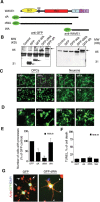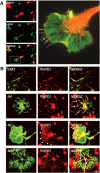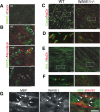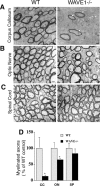WAVE1 is required for oligodendrocyte morphogenesis and normal CNS myelination
- PMID: 16723544
- PMCID: PMC6675261
- DOI: 10.1523/JNEUROSCI.4921-05.2006
WAVE1 is required for oligodendrocyte morphogenesis and normal CNS myelination
Abstract
Myelin formation involves the outgrowth of an oligodendrocyte cell process that can be regarded as a giant lamellipodium because it is an actively growing structure with extruded cytoplasm. The actin cytoskeleton is critical to morphogenesis, but little is known about regulation of actin dynamics in oligodendrocytes. Wiskott-Aldrich syndrome protein family verprolin homologous (WAVE) proteins mediate lamellipodia formation; thus, we asked whether these proteins function in oligodendrocyte process formation and myelination. Here, we show that WAVE1 is expressed by oligodendrocytes and localizes to the lamella leading edge where actin polymerization is actively regulated. CNS WAVE1 expression increases at the onset of myelination. Expression of dominant-negative WAVE1 impaired process outgrowth and lamellipodia formation in cultured oligodendrocytes. Similarly, oligodendrocytes isolated from mice lacking WAVE1 had fewer processes compared with controls, whereas neurons and astrocytes exhibited normal morphology. In white matter of WAVE1-/- mice, we found regional hypomyelination in the corpus callosum and to a lesser extent in the optic nerve. In optic nerve from WAVE1-/- mice, there were fewer nodes of Ranvier but nodal morphology was normal, implicating a defect in myelin formation. Our in vitro findings support a developmentally dynamic and cell-autonomous role for WAVE1 in regulating process formation in oligodendrocytes. Additionally, WAVE1 function during CNS myelination appears to be linked to regional cues. Although its loss can be compensated for in many CNS regions, WAVE1 is clearly required for normal amounts of myelin to form in corpus callosum and optic nerve. Together, these data demonstrate a role for WAVE1 in oligodendrocyte morphogenesis and myelination.
Figures







References
-
- Asou H, Hamada K, Sakota T (1995). Visualization of a single myelination process of an oligodendrocyte in culture by video microscopy. Cell Struct Funct 20:59–70. - PubMed
-
- Baron W, Colognato H, ffrench-Constant C (2005). Integrin-growth factor interactions as regulators of oligodendroglial development and function. Glia 49:467–479. - PubMed
-
- Barres BA, Raff MC (1994). Control of oligodendrocyte number in the developing rat optic nerve. Neuron 12:935–942. - PubMed
-
- Bjartmar C, Kinkel RP, Kidd G, Rudick RA, Trapp BD (2001). Axonal loss in normal-appearing white matter in a patient with acute MS. Neurology 57:1248–1252. - PubMed
Publication types
MeSH terms
Substances
Grants and funding
LinkOut - more resources
Full Text Sources
Other Literature Sources
Molecular Biology Databases
